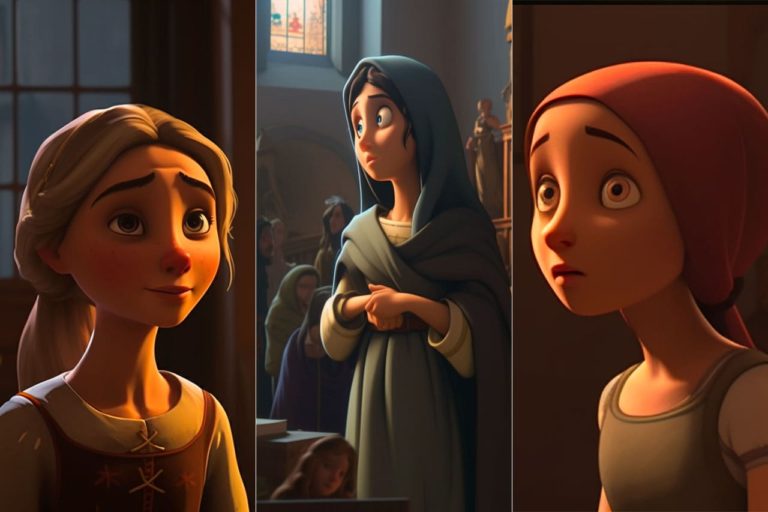The Renaissance was a time of great cultural and artistic growth, and its influence can still be seen in the art world today. From the classical beauty of Michelangelo’s sculptures to the complex perspective of Da Vinci’s paintings, Renaissance art set a new standard for artistic excellence that has been emulated and built upon by artists for centuries. In this article, we’ll explore the influence of Renaissance art on modern day art.
Perspective and Realism
One of the defining characteristics of Renaissance art was its use of perspective and realism. Renaissance artists sought to create images that looked as if they could be seen in real life, and they used techniques like linear perspective to create the illusion of depth and space. This emphasis on realism had a profound impact on the art world, inspiring artists to experiment with new techniques and to push the boundaries of what was considered possible.
Today, we can see the influence of perspective and realism in a wide range of art forms, from photography to digital art. Contemporary artists like Chuck Close and Richard Estes use techniques like photorealism to create incredibly lifelike images that blur the line between art and reality.
Classical Beauty
Another hallmark of Renaissance art was its celebration of classical beauty. Renaissance artists were inspired by the classical art of ancient Greece and Rome, and they sought to emulate the idealized beauty of the human form that was depicted in these ancient works. This emphasis on beauty and perfection had a lasting impact on the art world, inspiring artists to explore new forms of beauty and to celebrate the human form in all its complexity.
Today, we can see the influence of classical beauty in a wide range of art forms, from fashion to sculpture. The work of contemporary artists like Kehinde Wiley and Cindy Sherman demonstrates a continued fascination with the beauty and complexity of the human form.
Symbolism and Narrative
Renaissance art was often rich in symbolism and narrative, with many works telling stories or conveying complex meanings through the use of symbols and allegory. From Botticelli’s “The Birth of Venus” to Bosch’s “The Garden of Earthly Delights,” Renaissance art was full of works that were meant to be interpreted and analyzed.
This emphasis on symbolism and narrative had a profound impact on the art world, inspiring artists to explore new forms of storytelling and to use art as a means of communicating complex ideas and emotions. Today, we can see the influence of symbolism and narrative in a wide range of art forms, from literature to film to contemporary art. The work of artists like Kara Walker and Banksy demonstrate a continued fascination with using art to tell stories and convey complex messages.
Humanism
Perhaps the most enduring legacy of Renaissance art is its celebration of humanism. Renaissance artists placed a great deal of emphasis on the human form, exploring its complexity and beauty in ways that had never been seen before. This celebration of the human form had a profound impact on the art world, inspiring artists to explore new forms of self-expression and to celebrate the beauty and complexity of the human experience.
Today, we can see the influence of humanism in a wide range of art forms, from portraiture to sculpture to performance art. The work of artists like Marina Abramovic and Ai Weiwei demonstrate a continued fascination with the human form and its many facets.
Conclusion
The influence of Renaissance art on modern day art cannot be overstated. From perspective and realism to classical beauty and symbolism, the innovations and achievements of Renaissance artists continue to inspire and influence artists today. Whether through the celebration of the human form or the exploration of complex ideas and emotions, the legacy of Renaissance art lives on in the art world of the 21st century.
Frequently Asked Questions
Q: What was the Renaissance?
A: The Renaissance was a period of cultural and artistic growth that occurred in Europe from the 14th to the 17th century. It was characterized by a renewed interest in classical art and culture, as well as a focus on humanism and individualism.
Q: What were some of the key features of Renaissance art?
A: Renaissance art was characterized by a focus on perspective and realism, classical beauty, symbolism and narrative, and humanism.
Q: How did Renaissance art influence modern day art?
A: Renaissance art had a profound impact on modern day art, inspiring artists to explore new techniques and forms of self-expression. Many of the innovations and achievements of Renaissance artists continue to influence and inspire artists today.
Q: What are some examples of modern day art that are influenced by Renaissance art?
A: Examples of modern day art that are influenced by Renaissance art include photorealism, classical portraiture, and performance art that explores the human form and its many facets.
Q: What is the significance of symbolism and narrative in Renaissance art?
A: Symbolism and narrative were important features of Renaissance art, allowing artists to convey complex ideas and emotions through the use of symbols and allegory. This legacy continues to influence artists today, who use art as a means of storytelling and conveying complex messages.
Q: Why is humanism an important legacy of Renaissance art?
A: Humanism was a central tenet of Renaissance art, celebrating the beauty and complexity of the human experience. This emphasis on humanism has had a lasting impact on the art world, inspiring artists to explore new forms of self-expression and to celebrate the beauty and complexity of the human form.
